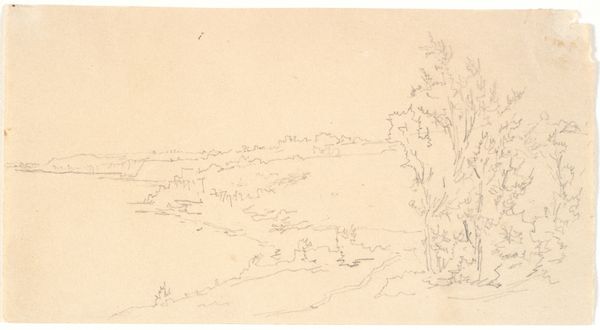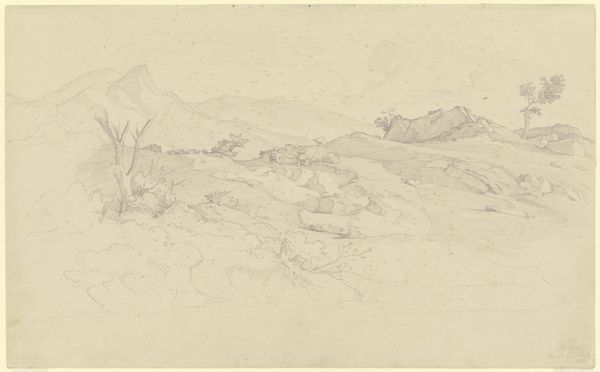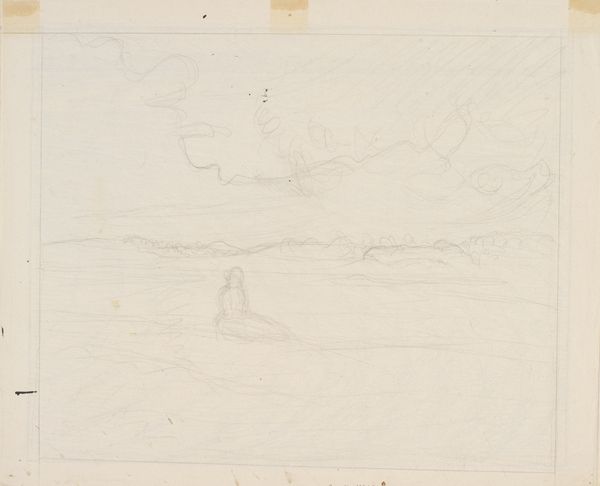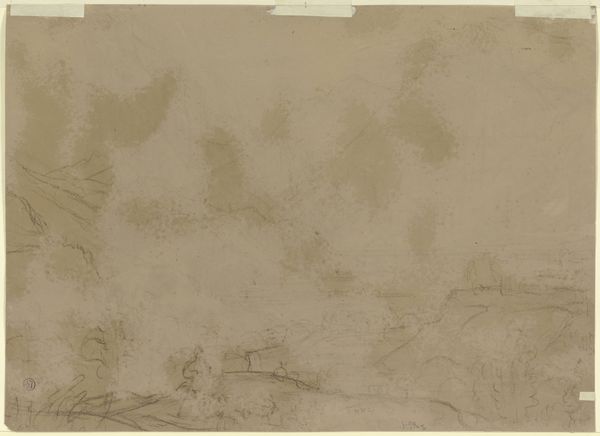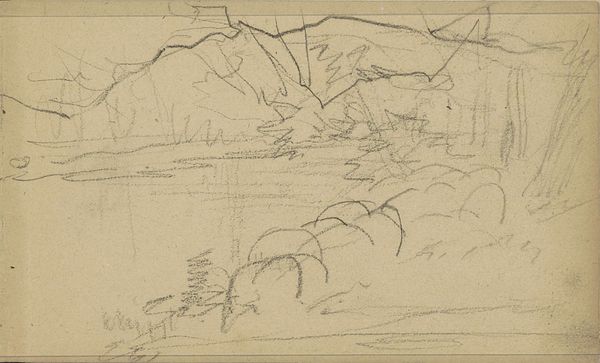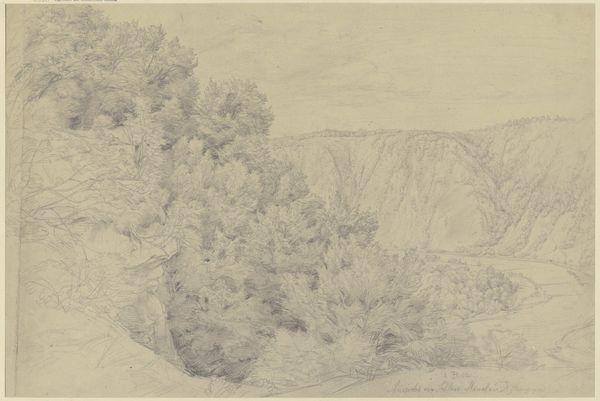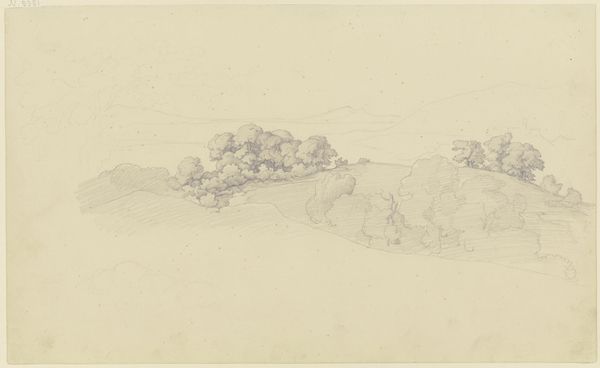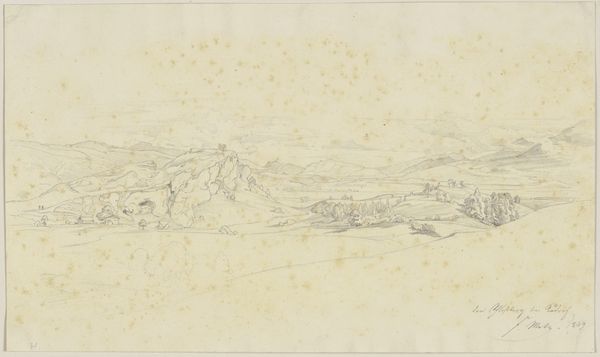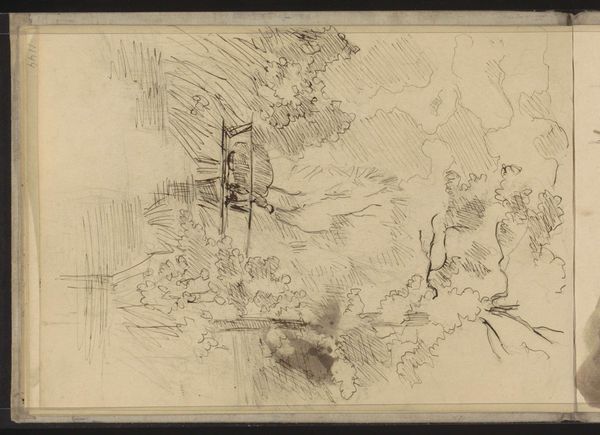
drawing, pencil
#
drawing
#
dutch-golden-age
#
landscape
#
etching
#
pencil
#
line
#
realism
Dimensions: height 324 mm, width 500 mm
Copyright: Rijks Museum: Open Domain
Editor: So, this is Ferdinand Hart Nibbrig’s "Landschap in Algiers, Rummel," which was done sometime between 1876 and 1915. It’s a pencil drawing. I’m really struck by the grid lines still visible beneath the sketch; it gives it such a raw, process-oriented feel. What do you see in this piece? Curator: What I find compelling is how the grid disrupts the illusion of landscape, pulling us back to the materiality of the paper itself. This pencil study transcends a mere depiction; it exposes the labour and construction inherent in landscape art. How does the ‘real’ Algiers, with its social realities and colonial exploitation, filter through Nibbrig’s hand and onto this gridded surface? Editor: That's fascinating. It makes me think about how the act of drawing, the physical labor, is being foregrounded here. The grid makes me consider the labor division needed to build this colony. Curator: Exactly. And consider the accessibility of these materials: paper, pencil. How does the portability and affordability of these materials affect artistic production and dissemination? Is this landscape for the wealthy elite, or something more democratized? It encourages one to think about how art reflects production capacities, social class and resource control at the time. The question is, for whom this landscape becomes valuable? Editor: I hadn’t thought of it that way – more about who the materials are available to than what is being represented. So, we're seeing the value in the process, in the accessibility of materials. Curator: Precisely. Editor: Well, I definitely have a new perspective on landscape art and the process it takes to make them. Thanks! Curator: My pleasure. I hope it can open new discussions with modern art viewers, too.
Comments
No comments
Be the first to comment and join the conversation on the ultimate creative platform.
